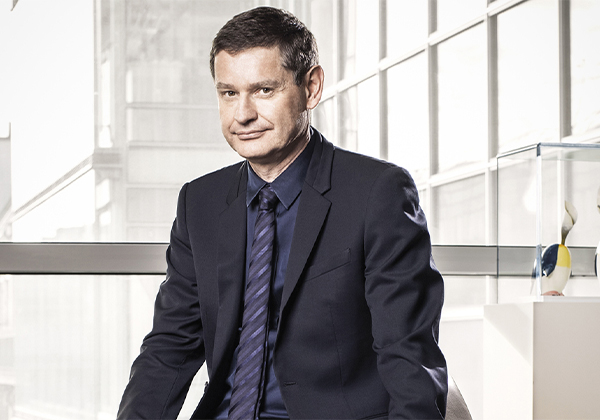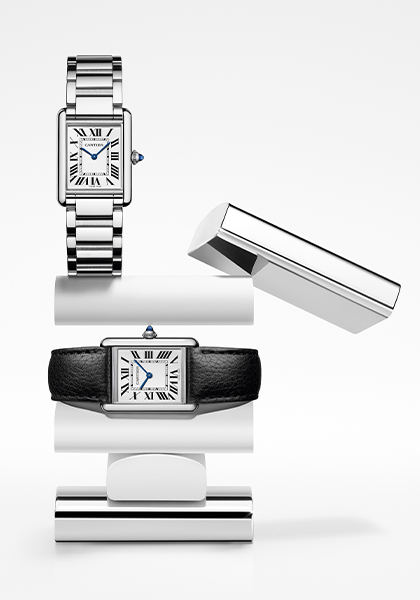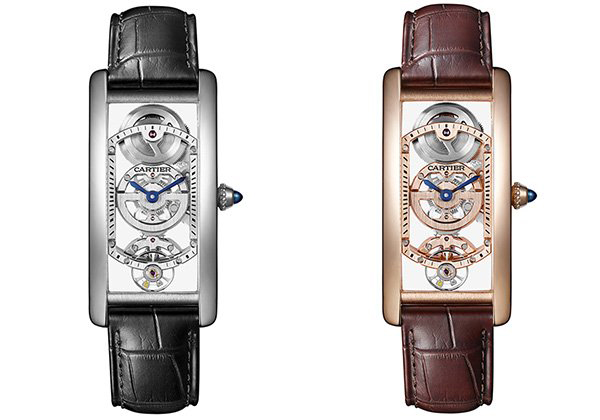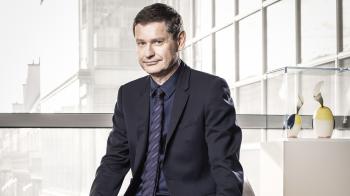How do you explain Cartier's excellent results last year despite the pandemic?
They reflect our strategy over the past five years, rather than of any particular year. The repositioning that we have carried out on the product range, on the organization, on the network, on the boutiques, on the entire business, has generated very strong desirability across all generations that the Maison did not have five years ago. The pandemic was a very powerful accelerating and differentiating factor: the stronger the brands, the more they grew, in watchmaking just as in fashion. This crisis was an eye-opener. Cartier was in demand among all categories of customer in all countries because they no longer traveled, thereby generating domestic growth, Europeans included. Cartier showed the strength of its relationship with its clientele, not only in terms of travel and not only because of price differences. The positions we have adopted have paid off. In watchmaking, the more we have focused on distinctive and durable collections, the more successful they have been. It turns out that distinction is more important than novelty, but it has to be both distinguished and distinctive. It thus became the systematic approach, leading us to relaunch the Santos, the Baignoire and the Pasha, which are continuing to grow. The Santos is now the second best-selling line behind Ballon Bleu, while all lines are making a strong comeback, with the gap between them closing.

For example?
Last year the re-launch of the Tank Must as a replacement for the Tank Solo exceeded all our expectations, and many models were immediately sold out, some even going for double the official price on the secondary market! This was a first, especially for CHF 2500 timepieces. As soon as it was released, the Santos S did very well. Customers showed us that their interest was growing in proportion to the affirmation of our territory. Cartier has reached this point of performance both for the icons of its core range and for the expression of shapes with Cartier Privé, the object of purely creative limited editions intended for collectors. We could also mention the immediate success of the Maillon presented two years ago, among an audience with different interests.

So the two-year absence of a watch show was not an obstacle?
Having opportunities to get together is important, including to put things in perspective, or to set the stage for our range. We see the interest and the emulation, but we don't need it from a commercial point of view. We have moved beyond this model because it is more relevant to keep the timeline open. It is no longer conceivable to take orders a year in advance without knowing where they will be delivered, because in today's volatile world it is impossible to know which country will be open in six or nine months, and what the customer dynamics will be in a given location. It doesn't make sense. We prefer to have a general reaction point in order to manage the deployment of products according to the market dynamics as they are.
How do you achieve this?
We have been preparing for this for a long time by changing our forecasting and deployment models, while increasing our industrial flexibility. Within an industry that is generally fixed in place over nine to twelve months, we have reduced this period to three months. Our flexibility does not come from manpower but from our industrial capacity. During the Covid crisis we did not lay off personnel and instead even hired some. Nonetheless, we experienced volume variations ranging from -30% to +100% over a year. This flexibility is unprecedented, and salutary, since we suffered a total halt in demand – given that everything was locked down between February and April – then China rebounded by 100% very quickly, the USA by 30-40%, and the Middle East by 100%. Within models defined on a yearly basis, this does not work at all. We did however align ourselves with these volumes in watches and jewelry, enabling us to achieve spectacular growth rates at the end of December. No one has been so fast in our industry.
When presented like this, it sounds easy...
In reality, five years ago we transformed our demand models, which became deployment- rather than supply-driven, based more on probabilistic models than on stock processing models, and therefore more related to quantum physics. Our specialists were inspired by very complex algorithms used for handling applications and offers, taking into account thousands of criteria to arrive at a match. We've built them in over time and it works very well, in order to determine where the chances of deploying products are best and how to make them most available across a network. For example, to achieve availability of the whole range visible across an entire market like Japan, spreading all the products across all the outlets, yet each in one outlet at a time, so as to make them all available to everyone.
It's been a long time since Cartier presented a timepiece as complicated as the Masse Mystérieuse; does this spell a return to grand complications?
Yes and no. Although we have never dropped out of the realm of complications, introducing lots of them each year with new movements is not necessarily our territory. One important point for Cartier is to place technique in the service of design, and there are two very strong elements for us: skeleton movements and mystery clocks. Combining the two with a highly sophisticated skeleton movement in the form of an oscillating weight in a mysterious case has never been done before, yet such an innovation still required 8 years of R&D. With our skeleton and mystery movements alone, we now sell many more complication pieces than when we tried to make many more. The important thing is to stay true to our territory and to work on it in depth. Take for example the Pacha and Santos Skeleton models, for which demand far exceeds our production capacity.
Do you see a new generation of collectors being attracted to Cartier?
Indeed, there is a real interest in heritage, but not necessarily in novelty. The more famous and older models are, the more this attraction is manifested, especially when we bring back to life Cartier Privé watches from the 1970s with the Crash, the Tank Cintrée or the Tank Asymétrique. As the Internet makes it easy to get information, we see young collectors in their 20s and 30s communicating with each other and owning very sophisticated Cartier models. We are witnessing very high results at Crash auctions, including lots going under the hammer at the unheard sum of 800,000 euros, along with many purchases by young customers.

What advantages and limitations do you see in blockchain technology?
There are different protocols in blockchain that are not necessarily as energy-intensive as crypto-currencies or NFTs, and so in this area blockchain has a certain value in terms of guarantee certificates and upstream traceability. The spectrographic analysis of rough diamonds maintaining this trace throughout their life is very promising. Without necessarily having traceability of the various actors, it is still possible to identify where the rough diamond comes from. This upstream traceability of diamonds and colored stones will be able to progress enormously through blockchain. Ensuring customers’ long-term security implies securing what is recorded in the blockchain. If we put the warranty certificates for our watches – which have a lifespan of more than 20 or 30 years – into the blockchain, we have to make sure that the organization is still there. If it's a brand-new company that wants to sell up in three years for a profit and we don't know who the buyer is, that would not be reassuring for our customers. For this reason, Cartier has partnered with LVMH and Prada in the Aura blockchain consortium to ensure the same customer privacy values and sustainability values from this blockchain. We are in it for the long haul in the company of luxury partners with whom it is possible to define a common standard and practical rules.
Will we see Cartier in the Metaverse?
The Metaverse is a complementary virtual world, which can also be likened to playing at not being yourself, which already exists: it's called carnival. Humans have long enjoyed pretending to be someone different, so it's not a revolution. When I was a teenager, I read The Lord of the Rings and we played Dungeons and Dragons: we were already enjoying escapist-style entertainment, so let's see in ten years what it becomes. As far as NFTs are concerned, this results in purely virtual luxury products… Why not? Yet our main job is to make tangible products for intangible feelings. I feel the watch on my wrist, like a ring or a bracelet, gifted for a memorable date, I prefer to feel it against my skin rather than displaying something on a computer. If I go home with a bouquet of flowers, it will give more pleasure than if I offer a QR code with the symbolic value of NFTs, it's not the same thing.





